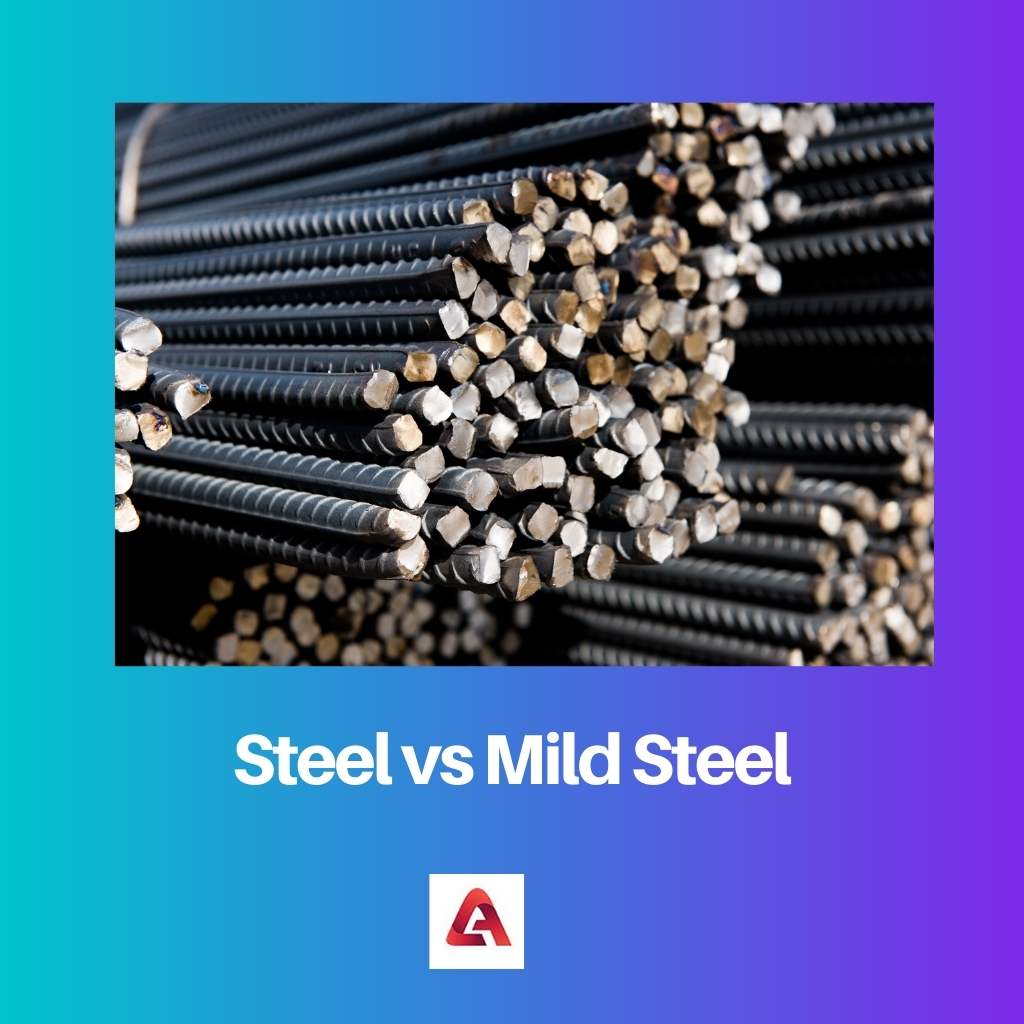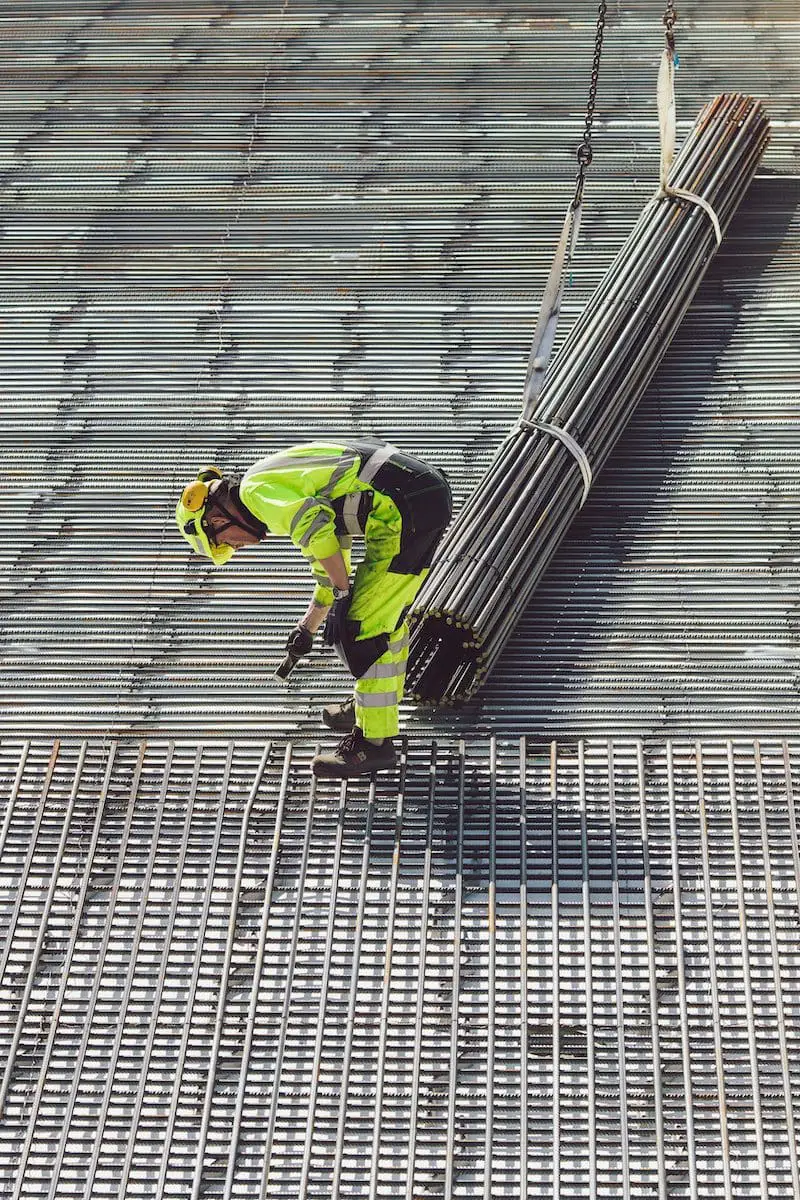Steel and mild steel can be confused with one another. Both metals are used for various purposes, largely for construction.
Key Takeaways
- Steel exhibits higher tensile strength than mild steel, making it suitable for heavy-duty applications and construction projects.
- Mild steel contains lower carbon content (up to 0.25%) than steel (0.25% to 2.14%), resulting in increased malleability and ease of welding.
- Steel offers better resistance to corrosion than mild steel, which requires protective coatings or treatments to prevent rust.
Steel vs Mild Steel
The difference between steel and mild steel is that steel is harder than mild steel as it has a higher carbon content. Even though mild steel is comprised of carbon as well, it comprises a variety of mixtures of alloys that steel doesn’t. This mixture of metals is made to have very specific characteristics.

Steel is a hard metal known for its strength and rigidness. It has a high carbon content which makes it brittle and durable. By virtue of this, steel is used to make various tools and cutting instruments.
Mild steel is a sub-variety of steel alloy. Carbon is one of its major components. Other elements may even include non-metals. Due to this, mild steel is not as brittle, strong and durable as steel.
Comparison Table
| Parameters of comparison | Steel | Mild Steel |
|---|---|---|
| Carbon content | Steel has a higher carbon content than mild steel. | Mild steel has a lower carbon content. |
| Strength | Steel is a very strong metal. | Mild steel is not very strong. |
| Composition | Steel is a metal made up of carbon. | Mild steel is an alloy which means that it is made up of a mixture of various metals and non metals. |
| Durability | Steel is very durable. | Mild steel is not as durable as steel. |
| Malleable | Steel is very hard to bend and thus not very malleable. | Mild steel is malleable. |
| Cost | Steel is more expensive than mild steel. | Mild steel is a little expensive as it is made up of various metals. |
| Corrosion | It is very easy for steel to rust. | Mild steel is galvanised to protect its surface. |
| Uses | Steel is used to make hard tools and cutting instruments. | Mild steel is used for making pipes, nuts, bolts, chains, magnets and much more. |
What is Steel?
Steel is an alloy that is formed from iron. It is used for manufacturing tools for construction. It has a very high carbon content, making it strong, durable, hard and less malleable.
One of the most widely used types of steel is alloy steel. Such a property makes it perfect for being used to build automobiles such as cars, trains, buses, and even aircraft parts.
When iron is in its pure form, it is not very hard. Therefore, it is not very manageable to use as a construction material. This pure form of metal is made into steel alloy by adding carbon to it.
The history of steel can be tracked down to when three French scientists distinguished and identified the nature of the metal. Steel was officially defined in 1786, however, it was not until the 19th century that production started on a larger scale.

What is Mild Steel?
Mild steel is a type of steel that is made up of the element ‘carbon’. However, this element is present in very small quantities. Moreover, there are a lot of other metals and non-metals that are used to make mild steel.
Since the carbon content of this alloy is very low, it is very malleable. This makes it easy to use for building pipes, hinges, nuts, screws and bolts.
Mild steel also contains low amounts of chromium, molybdenum and other alloying elements. Since the carbon content is low, the metal is malleable, ductile, easy for machines and affordable as compared to others.
A common method to produce mild steel is from iron and coal. First, these elements are extracted from the ground and then melted together.

Main Differences Between Steel and Mild Steel
- Steel is costlier than mild steel.
- Steel is not very malleable, whereas mild steel is easy to bend and move.
- It is easy for steel to rust.

- https://iopscience.iop.org/article/10.1088/0370-1301/64/9/303/meta
- https://www.sciencedirect.com/science/article/pii/037971128890029X

The detailed comparison of steel and mild steel was very informative. The article provides valuable insights into the unique properties of each type of steel.
I agree. The article effectively highlights the uses and properties of both steel and mild steel, making it easier to understand their differences.
Absolutely. The section on the corrosion resistance of steel and mild steel was particularly enlightening. It’s a crucial distinction between the two metals.
The comparison table is a great way to illustrate the differences between steel and mild steel. It provides a clear and concise overview of their unique properties.
The section on the composition and uses of mild steel was quite insightful. The article provides valuable information on the properties and applications of this metal.
I agree. The table was very helpful in understanding the distinctions between the two types of steel.
I didn’t know that mild steel had such a low carbon content. The article was very helpful in explaining this distinction.
The information on the composition and durability of steel and mild steel was quite enlightening. It’s not something I was aware of before reading this article.
The use of steel in automobile production is quite interesting. The history of steel provided in the article was also enlightening.
I also found the section on the history of steel very interesting. The article provided valuable insights into the development of the metal.
The information provided in the article is quite comprehensive and insightful. The use of steel in automobile production was particularly interesting.
Very informative article. The comparison table is extremely useful to understand the differences between steel and mild steel.
I agree. The table makes it very easy to understand the differences between the two.
The article effectively highlights the key differences between steel and mild steel, especially in terms of malleability and resistance to corrosion.
Yes, the section comparing the two types of steel was very informative and comprehensive.
I appreciated the detailed comparison table. It makes it easier to understand the distinctions between steel and mild steel
The article did a great job of explaining the differences between steel and mild steel, especially in terms of composition, strength, and malleability.
I found the section on the uses of mild steel very informative. It’s fascinating to learn about the wide range of applications for this metal.
The article effectively highlights the differences in cost, malleability, and corrosion resistance between steel and mild steel. Quite interesting.
I found the section on the uses of steel and mild steel particularly informative. It’s fascinating to learn about the various applications of these metals.
Agreed. The detailed comparison provides a clear understanding of the unique properties of each type of steel.